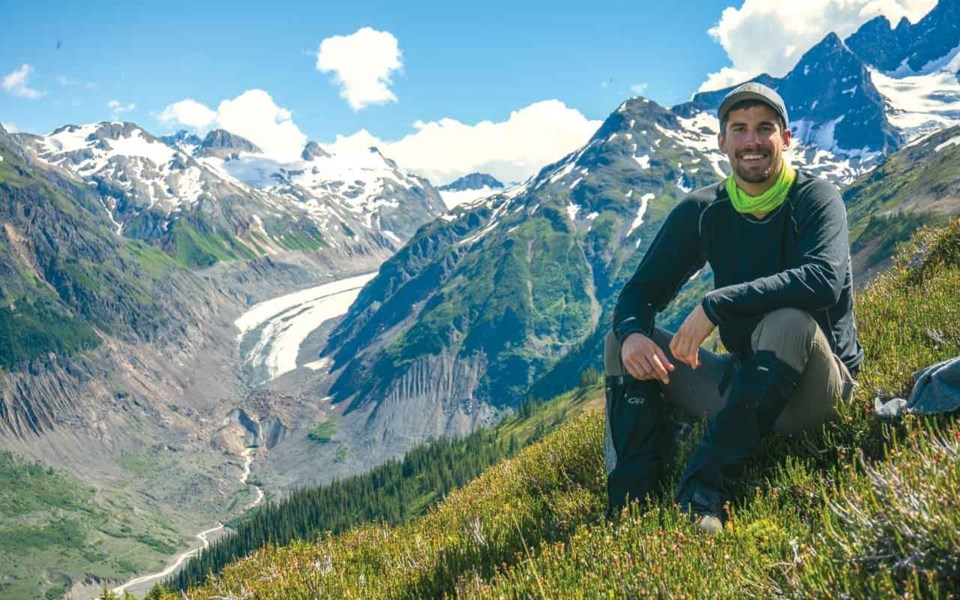Over the years, B.C. has accumulated an astonishing number of resource roads.
According to a recent auditor general's report — An Independent Audit of Grizzly Bear Management — the province boasts 600,000 kilometres of them and adds another 10,000 a year.
That's enough to wrap around the earth 15 times, according to Clayton Lamb, a PhD candidate at the University of Alberta, who is looking at how the roads impact the health of grizzly bear populations.
Lamb recently completed a four-year study of a recovering grizzly bear population in the Monashee Mountains, just east of the Okanagan. The area has been off limits to hunting for the past twenty years.
Conducted in conjunction with the province and local First Nations, Lamb's research adds to a growing body of evidence that draws a direct link between the number of roads in a given area and the number of grizzlies.
"It's not as if roads themselves are a detrimental thing to grizzly bears. It's more of an index for human access into wild places," explained Lamb.
Resource roads allow easy access into the backcountry, which can lead to "direct mortality" (from people with guns) and habitat loss, as grizzlies tend to steer clear of humans and human activity.
Using strategically placed wires, Lamb collected hair from grizzlies, which allowed him to track individual bears. Using statistical methods, he was able to determine population estimates for specific geographic areas. Then he controlled for the number of resource roads in those areas.
Lamb said that the area he studied encompassed a wide variety of terrain. That, in turn, allowed him to gain a good sense of how roads affect the population.
"We had a nice contrast of areas that had ranges of high to low road density and low to high bear density... We kind of mixed and matched and asked how those things combine," he explained.
In the middle of the study area lies Granby Provincial Park, which boasts good grizzly bear habitat and few roads. Lamb found that the grizzly bear density for the park is 44 grizzly bears per 1,000 square kilometres.
Whereas, the surrounding area grizzly bear density was just 11 per 1,000 sq. km.
"We've got about four times as many grizzlies in the Granby provincial habitat because has better habitat and fewer roads," explained Lamb.
Lamb said that the number of grizzly bears for a given area drops off when the number of roads exceeds 0.6 km per square kilometre.
"Around the 0.6 threshold was where grizzly-bear density really started to go down," he explained.
In areas where road density is less than 0.6 km per sq. km, you can expect around 30 grizzlies per 1,000 sq. km. But when it exceeds that threshold you can expect around 10 grizzlies.
Lamb, however, noted that it's a number that is applicable to areas like the one he studied, areas with "medium quality habitat and a low recovering population."
In northern B.C. — where there are fewer people and healthier grizzly populations — the threshold would likely be higher, he said.
"My guess is you'd still find a negative relationship with grizzlies and roads. But I'm almost sure that threshold would be different."
Closing logging roads can therefore help foster struggling grizzly bear populations, said Lamb.
"Access management through closing roads to the public is one viable way of doing it," he said.
"Physically closing down roads takes a lot of time. But a legislative change, where you put up a gate and a sign, can happen immediately."
Lamb's observation is in line with the recent auditor general's report, which recommended limiting the density of roads through a natural resource roads act.
Johnny Mikes, field director of the Coast to Cascades Grizzly Bear Initiative, said that while some areas in the region have relatively few resource roads compared to other areas of B.C., the roads that do exist are often located in critical areas, in valley bottoms, and therefore are "quite impactful."
Mikes believes that closing some, even at specific times, could help grizzly bear populations recover in critically endangered areas like the north Cascades and Stein-Nahatlach, an area bounded by the Fraser River, Lillooet and Harrison lakes, which has an estimated population of only 20 grizzlies.
Lamb's work is vital in that it lends to a growing body of work that draws the connection between resource roads and tenuous grizzly bear populations, explained Mikes.
"It reinforces previous studies," he said.
"It's another clear indication that motorized access management is really important in maintaining grizzly bears on the land base, and recovering certain at-risk or threatened populations."




